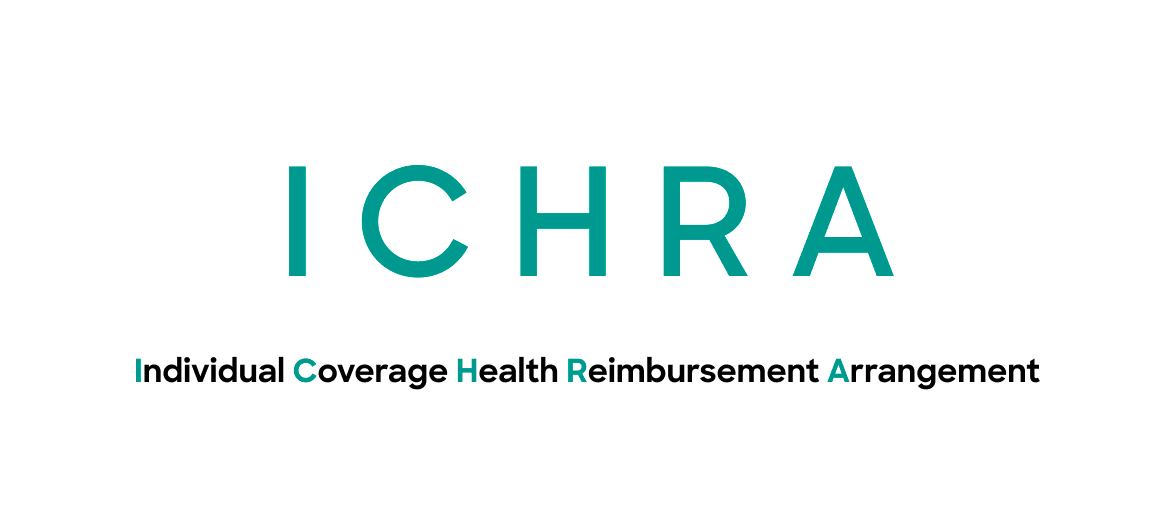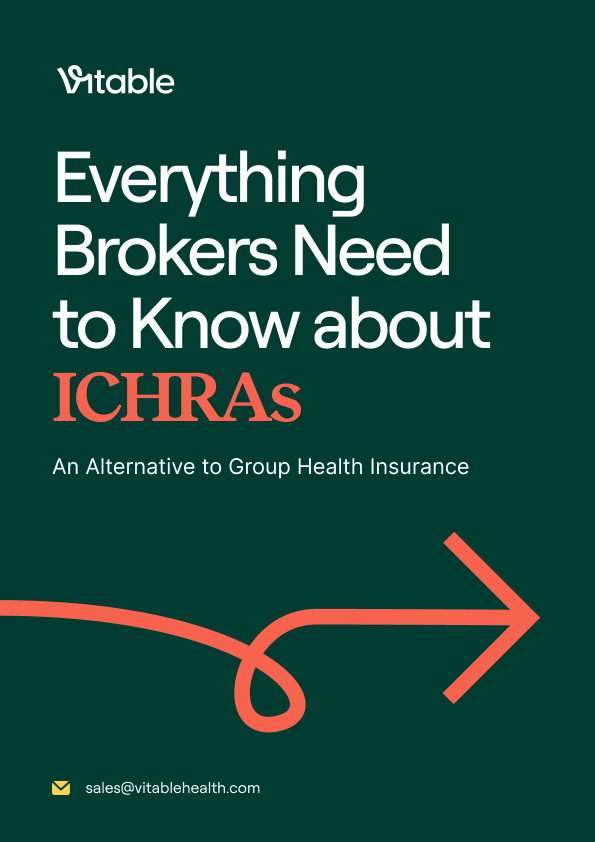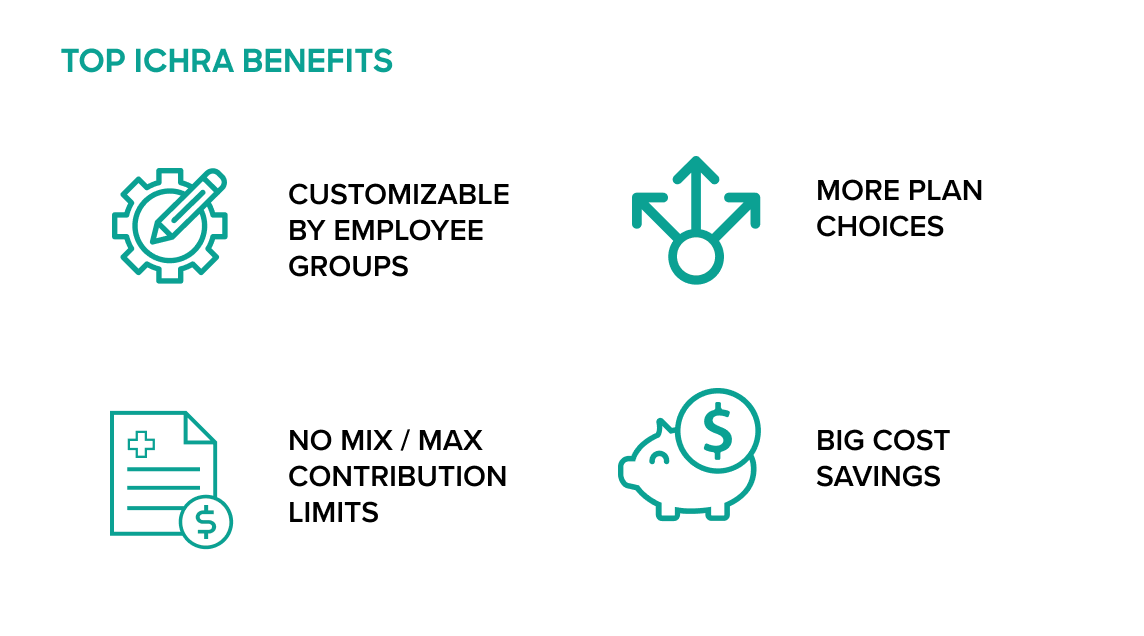What Does ICHRA Stand For?

Understanding what ICHRA means, how it works, its benefits for businesses, and the role of a HRA administrator like Vitable.
What does ICHRA Mean?
ICHRA is short for Individual Coverage Health Reimbursement Arrangement. ICHRA is a type of HRA (Health Reimbursement Arrangement). It is a structured group health plan that enables organizations to reimburse employees tax-free for individual health insurance premiums and eligible medical expenses, regardless of size. Unlike traditional group plans, ICHRA is a flexible and cost-effective benefit model. By implementing ICHRA, employers can offer employees more autonomy by helping them purchase their preferred individual health coverage independently. One that fits them and their unique needs best, versus a one-size-fits-all plan.
Alongside other IRS-approved HRA types like QSEHRA, EBHRA, and the Standard HRA, ICHRA is designed to help employers contribute toward their teams’ healthcare costs without the complexity or cost of a traditional group health plan.
What does Individual Coverage Mean in ICHRA?

The "individual coverage" in Individual Coverage Health Reimbursement Arrangement (ICHRA) refers to the employee’s responsibility to enroll in their own health insurance plan, typically through the individual marketplace or a private insurer. Unlike traditional group health plans, where employers select and offer a one-size-fits-all policy, ICHRA allows each employee to choose a plan that fits their unique healthcare needs.
Employers, in turn, offer a defined monthly or annual allowance to reimburse employees for part of the cost of that individual health insurance plan. This model gives employees more freedom and flexibility, while employers maintain cost control and simplify benefits administration.
By empowering employees to pick their own coverage, ICHRA promotes personalization, satisfaction, and better alignment between healthcare choices and individual preferences—all without the complexities and rising costs of group plans.
How does ICHRA work?
To understand how ICHRA works, let's break down the process into four key steps:
1. Employers design their benefits
Employers design their ICHRA benefits based on the needs of their employees and the company. This involves determining the amount of money offered to employees each month as a set allowance and deciding which expenses are eligible for reimbursement. Employers can also provide different benefits to employees in other groups based on their specific requirements.
2. Employees purchase a healthcare plan
Once the ICHRA benefit is set up, employees who opt into the ICHRA plan can use their allowance to purchase individual health insurance coverage and other qualifying medical expenses. The employer determines the range of out-of-pocket eligible expenditures, with some flexibility to limit certain items according to preference.
3. Employees submit expense documentation
After making their purchases, the employee must submit documentation of the payments they wish to be reimbursed. This documentation typically includes the name and cost of the item or service, the vendor's name, and the date of purchase. Invoices, receipts, or explanations of benefits from insurers or healthcare providers usually fulfill these requirements.
4. Employers review and reimburse expenses
Employers (or their HRA administrator, like Vitable) review the costs submitted and approve or reject reimbursement requests. Qualified expenses are then reimbursed up to the employee's accrued allowance. Employers often reimburse employees through payroll by adding a non-taxable line item to their paychecks, although other payment methods are possible.

Download 2025 Employer Guide to ICHRA
Vitable’s ICHRA Guide gives employers a clear, step-by-step resource for building smarter, ACA-compliant benefits.
This guide explains how ICHRAs work, who qualifies, and how Vitable simplifies setup, onboarding, reimbursements, and compliance — while giving employees more flexibility, control, and care.

Download Vitable’s 2025 Broker’s Guide to ICHRA
The Broker Guide to ICHRAs is a comprehensive resource that helps brokers understand, sell, and manage Individual Coverage HRAs with confidence.
This guide covers everything from compliance and class design to administration flows, case studies, and how Vitable streamlines quoting, enrollments, and reimbursements for brokers, employers, and employees.
ICHRA Eligibility Criteria
The Internal Revenue Service (IRS) has made it relatively easy for employers to be eligible for ICHRA. Organizations with at least one W2 employee can participate, including businesses, governmental bodies, and religious organizations. There are no maximum size limits or reimbursement rate caps, allowing businesses of all sizes to implement ICHRA as a viable employee benefit option.
Why Businesses Choose ICHRA

Implementing the Individual Coverage Health Reimbursement Arrangement (ICHRA) allows businesses to provide flexible, tailored health benefits to employees. It offers predictable healthcare costs and scalability for growing companies. Additionally, ICHRA comes with tax benefits for both employers and employees, making it a financially prudent choice in the evolving healthcare sector. This section will dive into the top benefits that an ICHRA plan provides employers.
Flexibility in contribution amounts
The Individual Coverage Health Reimbursement Arrangement (ICHRA) stands out in the realm of Health Reimbursement Arrangements (HRAs) due to its distinctive flexibility in contribution limits. While many HRAs have preset minimum or maximum amounts that employers can contribute, ICHRA bucks this trend, allowing for an unparalleled degree of financial adaptability. Employers aren't confined to a rigid structure; they have the autonomy to decide on contribution amounts that are in line with their financial capabilities and strategic objectives.
Customizable benefits for different employee groups
With ICHRA, employers can create other benefit classes based on employee characteristics such as full-time, part-time, seasonal, or even geographical location. This allows for tailored benefits that meet the diverse needs of the workforce.
Cost savings
ICHRA allows businesses to save on healthcare costs while offering their employees quality coverage. By empowering employees to choose and purchase their health insurance policies, employers can achieve significant cost reductions compared to traditional group health plans. For example, a Vitable customer saved $144,000, compared to their previous rate of $318,00 a year, by switching to an ICHRA.
Increased employee satisfaction
ICHRA allows employees to select a health insurance plan that best suits their needs and budget. This customization enhances employee satisfaction and engagement, as they have greater control over their healthcare choices.
Vitable: Simplifying ICHRA administration
At Vitable, we’re more than just an HRA administrator—we’re a health benefits platform built to make care better for everyday workers. Our full-service HRA administration takes the complexity out of managing an ICHRA, so employers can focus on their teams—not red tape.
With Vitable, both employees and administrators get a seamless experience from day one. Our user-friendly platform simplifies claims submission, accelerates onboarding, and makes communication clear and transparent. We handle compliance, documentation, and reimbursements—so you don’t have to.
And here’s what truly sets us apart: every ICHRA plan with Vitable includes access to our Primary Care Membership, giving employees in-home and virtual visits, 1,000+ free prescriptions and labs, and a mental health program—all designed to support holistic, affordable care.
Better health benefits. Simpler administration. Happier teams. That’s better by Vitable. Get started!
Frequently Asked Questions
Can any business participate in ICHRA?
Most types of businesses can participate in the Individual Coverage Health Reimbursement Arrangement (ICHRA), regardless of size. Both small businesses and large employers can offer ICHRA as a health benefit to their employees. ICHRA is particularly well-suited for companies that do not offer a traditional group health insurance plan or those looking for an alternative to the group plan they currently provide. Business owners, such as sole proprietors, partners in a partnership, and S-corp shareholders, are generally not considered employees and are therefore not eligible to participate in ICHRA. However, C-corp owners can participate in ICHRA.
Are there any contribution limits for ICHRA?
The ICHRA does not have federal minimum or maximum contribution limits set by the government. This gives employers flexibility in determining the amount they contribute to employees' ICHRA accounts.
Can employees choose their health insurance plan with ICHRA?
Yes, with the ICHRA, employees can choose their health insurance plan. Unlike traditional employer-sponsored health insurance, where employees typically have limited options, ICHRA allows employees to select an individual health insurance plan that best suits their needs. The Vitable team offers one-on-one enrollment assistance for employees looking to enroll in a new health plan.
Are there any restrictions on employee eligibility for ICHRA?
Yes, employees participating in ICHRA must purchase an individual health plan. They cannot be enrolled in a spouse's employer group health plan or a health-sharing or ministry plan.
How can Vitable assist with ICHRA administration?
Vitable provides comprehensive solutions for administering ICHRA, including streamlined claims management, onboarding processes, and compliance with legal requirements. Their user-friendly platform simplifies the management of employee reimbursements.
Ready to See if ICHRA Is Right for You? Let’s Talk.
When it comes to offering flexible, cost-effective health benefits, ICHRA is a powerful option—and Vitable makes it simple to get started.
Book a free consultation with our team to explore how ICHRA could work for your business. During the call, we’ll walk you through:
- A cost-benefit analysis of your current healthcare spend
- Potential savings with an ICHRA plan
- Custom benefit design options tailored to your team
- A preview of our platform and support experience
After the consult, we’ll deliver a personalized strategy that includes recommended plans, reimbursement amounts, and a detailed annual budget—so you can make a confident, informed decision.
Better benefits for your team. Smarter solutions for your business. Book your consult with Vitable!
Ready to learn more?
Stay ahead with the latest insights on healthcare, benefits, and compliance—straight to your inbox.
Get a quote
Get a personalized health benefits quote tailored to your company’s unique needs.
Vitable helps employers provide better healthcare to their employees and dependents by improving accessibility, cost, and quality.